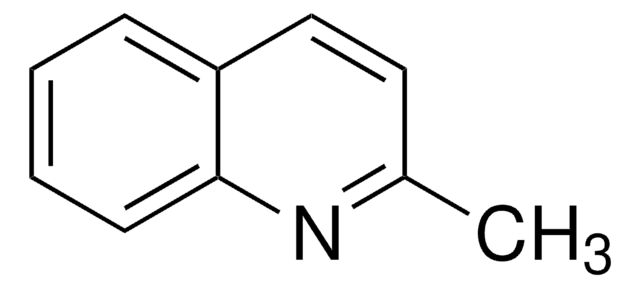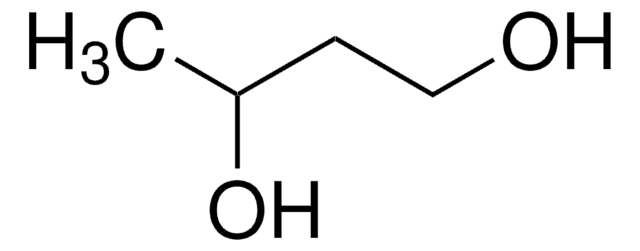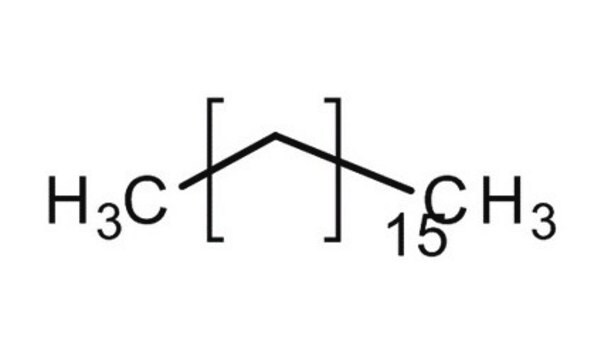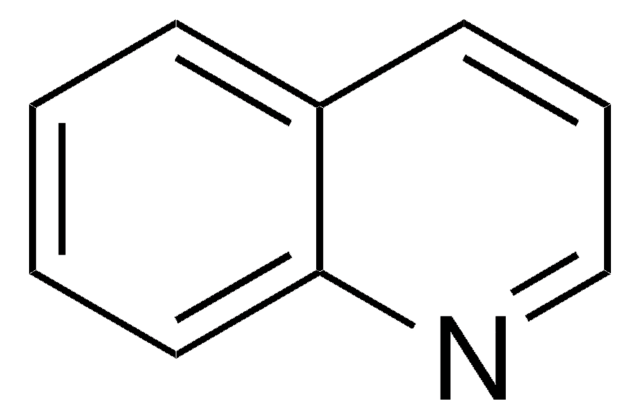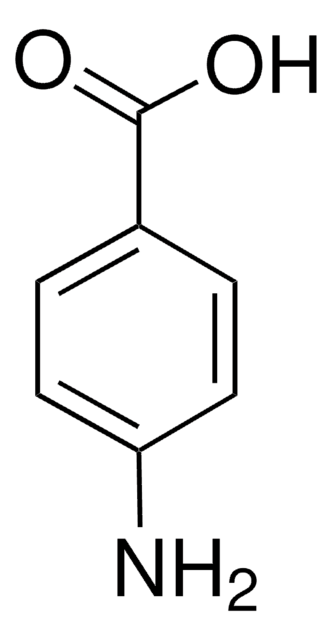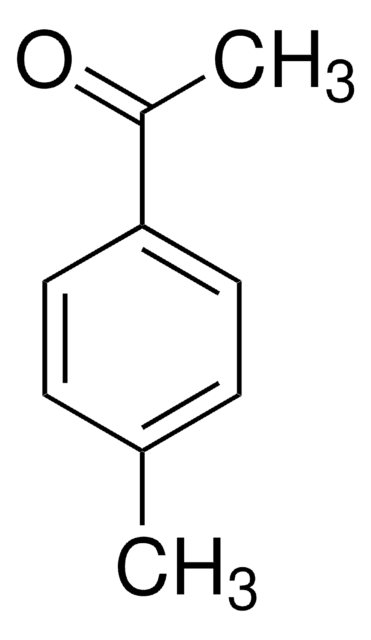Q2125
Quinaldine
analytical standard, ≥90% (GC)
Sinónimos:
2-Methylquinoline
About This Item
Productos recomendados
grado
analytical standard
Nivel de calidad
Ensayo
≥90% (GC)
técnicas
HPLC: suitable
gas chromatography (GC): suitable
índice de refracción
n20/D 1.612 (lit.)
bp
105-107 °C/10 mmHg (lit.)
248 °C (lit.)
mp
−9-−3 °C (lit.)
densidad
1.058 g/mL at 25 °C (lit.)
aplicaciones
forensics and toxicology
pharmaceutical (small molecule)
Formato
neat
cadena SMILES
Cc1ccc2ccccc2n1
InChI
1S/C10H9N/c1-8-6-7-9-4-2-3-5-10(9)11-8/h2-7H,1H3
Clave InChI
SMUQFGGVLNAIOZ-UHFFFAOYSA-N
Información sobre el gen
human ... CYP1A2(1544)
¿Está buscando productos similares? Visita Guía de comparación de productos
Aplicación
Palabra de señalización
Warning
Frases de peligro
Consejos de prudencia
Clasificaciones de peligro
Acute Tox. 4 Dermal - Acute Tox. 4 Oral - Aquatic Chronic 3 - Eye Irrit. 2 - Muta. 2 - Skin Irrit. 2
Código de clase de almacenamiento
10 - Combustible liquids
Clase de riesgo para el agua (WGK)
WGK 3
Punto de inflamabilidad (°F)
174.2 °F - closed cup
Punto de inflamabilidad (°C)
79 °C - closed cup
Equipo de protección personal
Eyeshields, Faceshields, Gloves, type ABEK (EN14387) respirator filter
Elija entre una de las versiones más recientes:
¿Ya tiene este producto?
Encuentre la documentación para los productos que ha comprado recientemente en la Biblioteca de documentos.
Los clientes también vieron
Nuestro equipo de científicos tiene experiencia en todas las áreas de investigación: Ciencias de la vida, Ciencia de los materiales, Síntesis química, Cromatografía, Analítica y muchas otras.
Póngase en contacto con el Servicio técnico